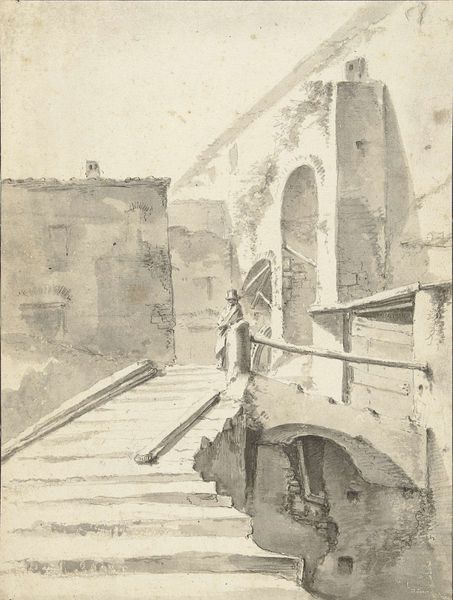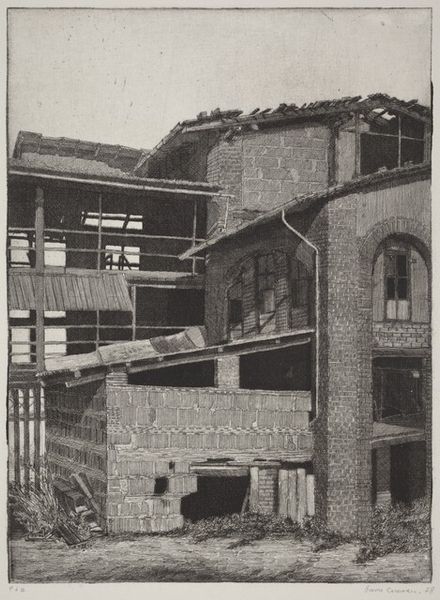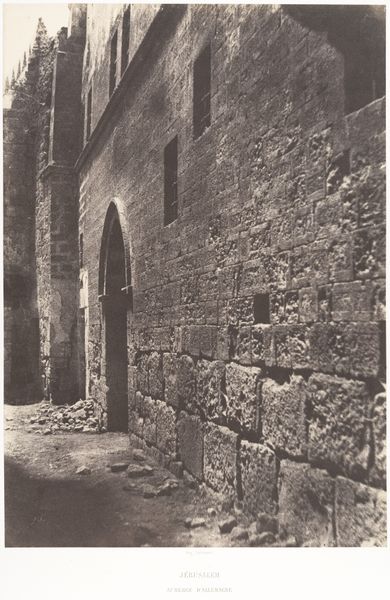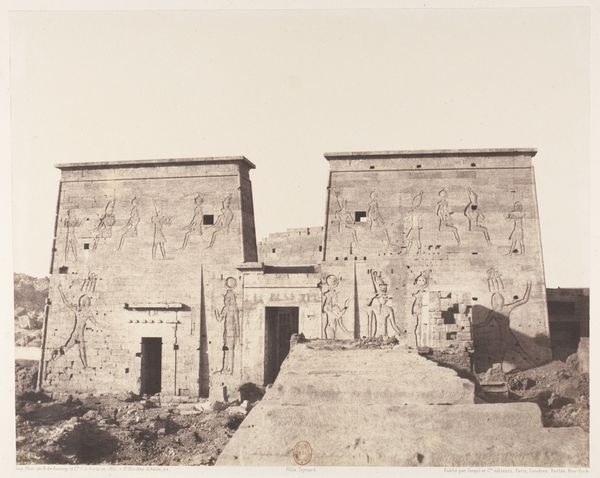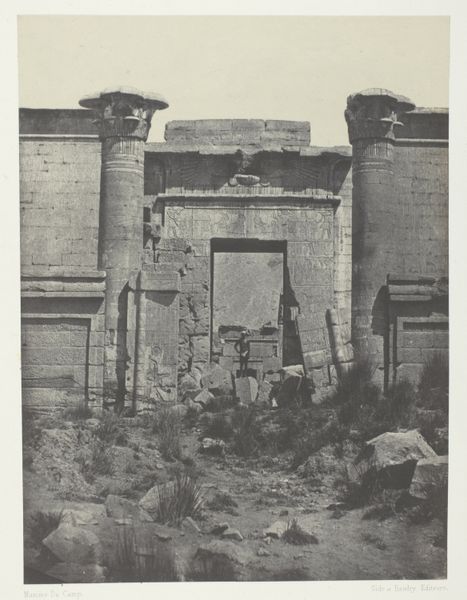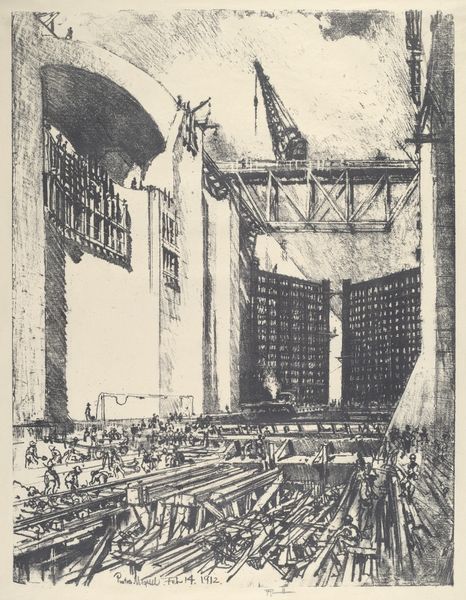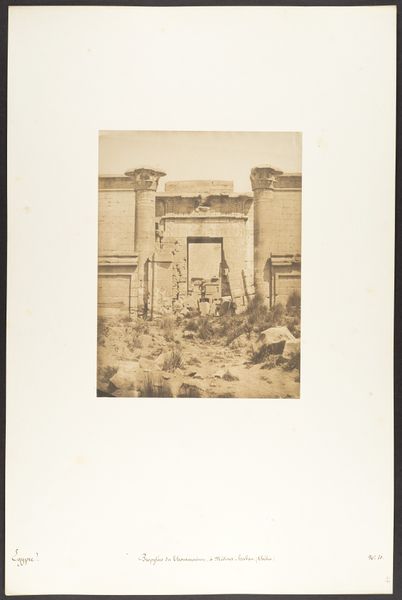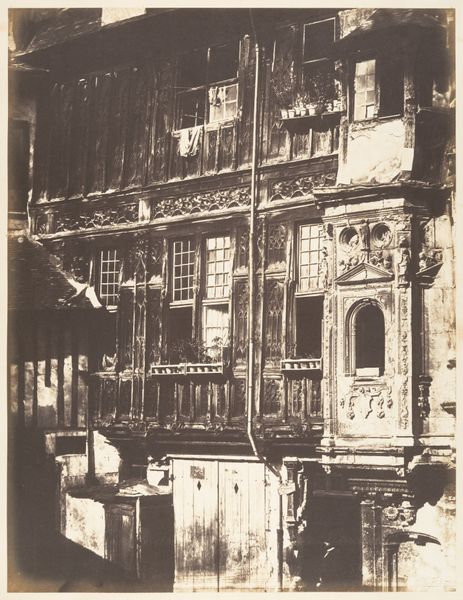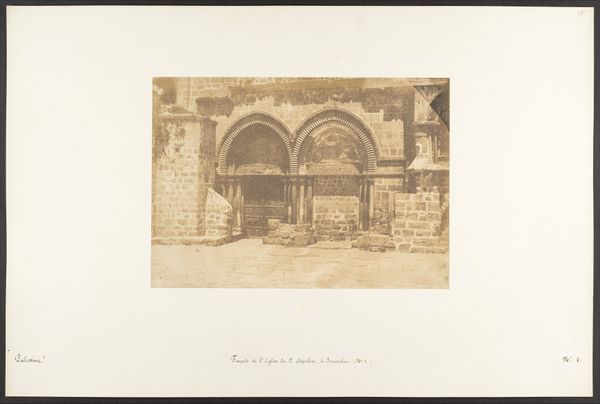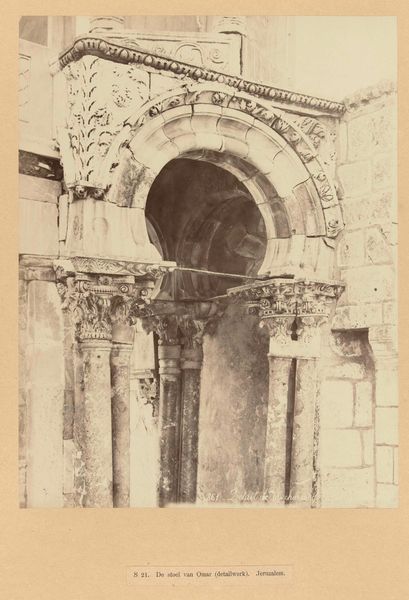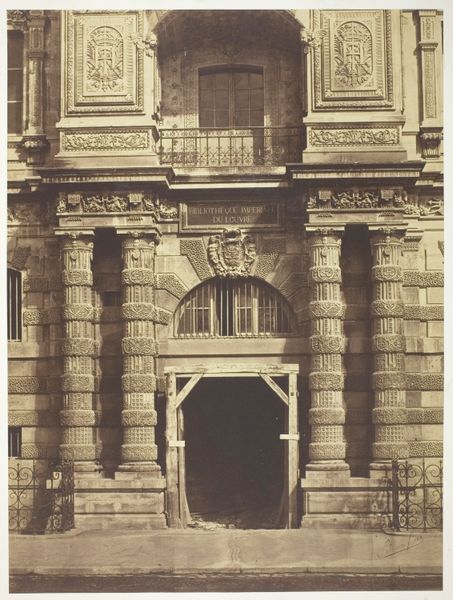
paper, photography
#
16_19th-century
#
war
#
landscape
#
paper
#
photography
#
pencil drawing
Dimensions: 23 × 17.2 cm (image/paper/mount)
Copyright: Public Domain
Editor: This photograph, "Vieille Maison en Restauration," attributed to Hippolyte Bayard and possibly dating between 1842 and 1865, shows an old house in the process of being repaired. The light and shadow play on the facade is interesting. What stands out to you? Curator: Immediately, the materiality of this photograph screams of the social conditions in which it was produced. Bayard, and other early photographers, were intensely concerned with establishing photography as a *legitimate* art form, pushing against its simple *usefulness*. This particular photograph demonstrates a very conscious control over the *process*, not simply the capturing of an image. The paper itself becomes a material that tells a story. Editor: You're saying the paper and the photographic process are central to understanding the work's meaning? Curator: Absolutely. Look at the detail, or lack thereof, and the potential for manipulation within the processes available at the time. This wasn't about snapping a quick shot; it was about crafting an image using light, chemicals, and a very deliberate act of *making*. The repair itself underscores the value of labour. Editor: The house under repair – it is indeed very clear how that act of making translates into the image and highlights labour as you said. Was there a tension between photography and traditional art at the time, concerning labour? Curator: Precisely. Painting and sculpture were still seen as inherently superior due to the *skill* and manual labour involved. Early photographers, like Bayard, had to assert the artistic merit—and labor—inherent in their craft. They chose subjects, manipulated the process, and ultimately produced objects that were meant to be *consumed* as art, not merely as documentation. Editor: That’s a fresh perspective! It seems more than a mere depiction; it's an argument about photography itself. I hadn't considered how much the materials and process themselves contribute to the overall message about artistry. Curator: Exactly. Reflect on the image as an art object. It transcends the subject to express an idea.
Comments
No comments
Be the first to comment and join the conversation on the ultimate creative platform.
